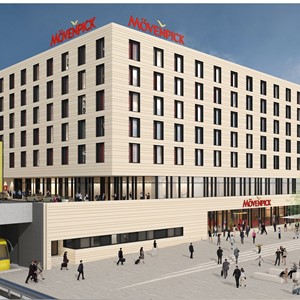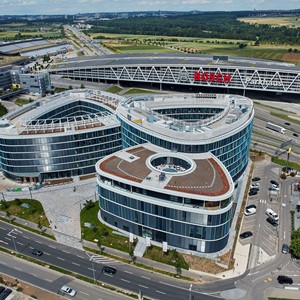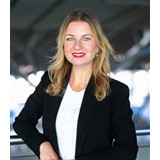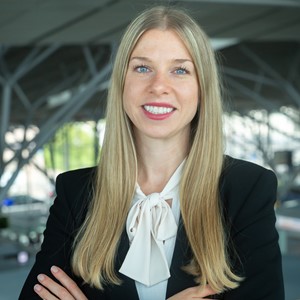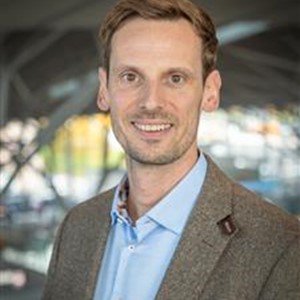
The Southern Cross
A new traffic hub is being built on the Filder, the likes of which are unparalleled. In addition to the airport itself, the new long-distance railway is at the heart of the most modern transfer point in Europe and will considerably improve accessibility to the entire region.
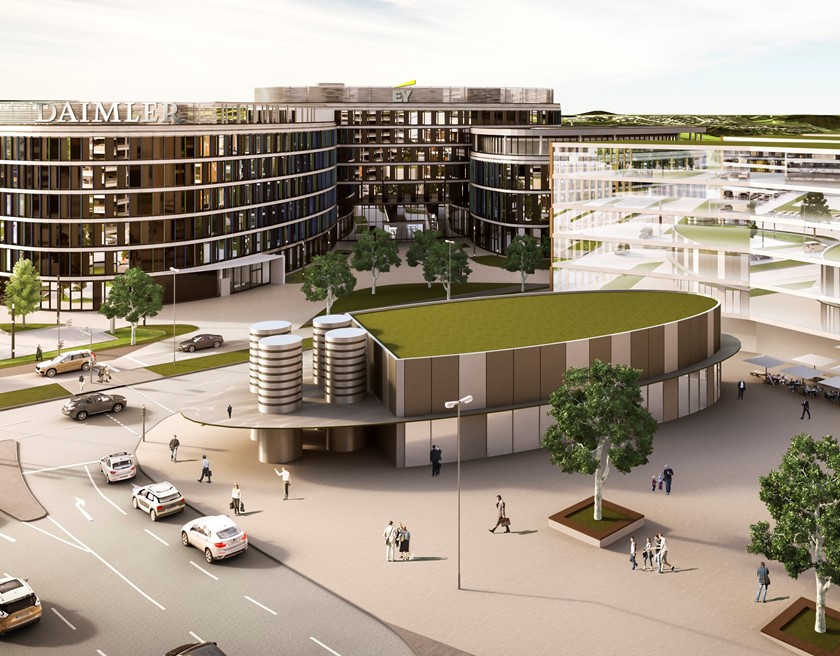
In the words of Greek philosopher Heraclitus: "panta rhei" - everything is in flux, life is movement. This realization also applies to the traffic hub at Stuttgart Airport. With a central bus terminal, a planned tram connection, a local train station, a well-developed motorway and, last but not least, a new airport railway station, it is being developed into the most modern transfer point in the whole of Europe.
Already today, the region around Stuttgart Airport is a prospering conurbation that has attracted many newcomers and helped the municipalities to considerable growth. The regional economy is booming, as evidenced by the airport’s new business park with 80,000 square meters of developable land: Stuttgart Airport City. In times of increasing global orientation and economic interdependency, this location is setting new standards, especially in terms of mobility. This, among other factors, was reason enough for the auditing firm Ernst & Young to relocate their German headquarters to the new Stuttgart Airport City.
Many other companies have already put their feelers out--with good reason. Stuttgart Airport is contributing a total of 359 million euros to the Stuttgart-Ulm rail project because the operators expect considerable benefits from the expansion of the already good infrastructure. A traffic that is unrivalled in Europe is being created around the state trade fair and Stuttgart Airport.
Not only Stuttgart Airport but also the whole state is supporting the project on the Fildern: Baden-Württemberg is investing 950 million euros in the expansion of the infrastructure to strengthen the economic region, to shorten travel times and thus enable better connections between conurbations. Both the airport itself and the new railway station Flughafen/Messe are at the heart of the new traffic junction, where suburban trains, long-distance trains, buses, regional trains and trams from all directions meet. The accessibility of the entire Filder region with its 150,000 jobs and around 250,000 inhabitants will be considerably improved. In future, the fastest route will often no longer be from Stuttgart Central Station or the busy and congested A8, but rather via the new mobility stronghold at Stuttgart Airport City business park.
This is a particular advantage for many medium-sized businesses as they can pick up their business customers faster and more conveniently at the airport. The time savings are considerable: the new route will enable rail passengers to travel up to 100 minutes faster from Friedrichshafen to Stuttgart Airport and up to 47 minutes from Freudenstadt, 53 minutes from Heidelberg, 75 minutes from Constance, 46 minutes from Karlsruhe, 42 minutes from Mannheim and 90 minutes from Ulm. Numerous other cities and regions will also be much better connected in the future. Neighboring towns like Waiblingen, Reutlingen, Esslingen, Göppingen, Böblingen or Backnang and more remote ones such as Offenburg, Freiburg, Geislingen or Crailsheim are all moving closer to the Filder area and the airport.
The industrial and commercial enterprises in the conurbation look forward to the new traffic hub on the Filder River with great anticipation. Today it’s not only the big global players that have to be well connected, but also the large number of medium-sized companies, few of which can afford to be only active at a local level. The good connection is also important in the increasingly difficult search for qualified specialists, who can be in the region in an hour from many places in Baden-Württemberg as a result of the expanded infrastructure. For many employees, this means that they no longer have to move; they can commute. The Verband Region Stuttgart estimates that the catchment area for commuters will increase from 2.7 million people to 5.5 million. This will make the entire Filder region around the airport even more attractive as a workplace of the future.
This might also interest you


